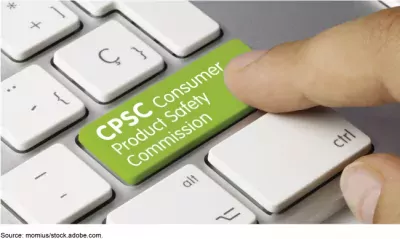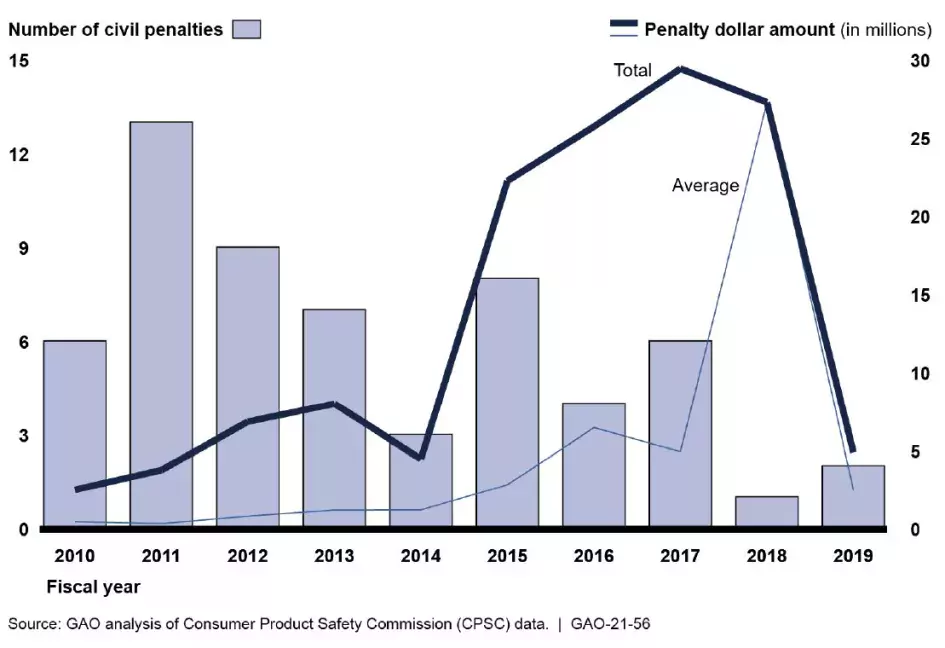What is the Consumer Product Safety Commission, and How Does It Protect Consumers from Hazards?
Have you ever wondered who checks to make sure that the new toy you bought for your child does not contain a choking hazard or that your child’s car seat meets safety standards?
The Consumer Product Safety Commission (CPSC) is a small agency with the big responsibility of protecting consumers from dangerous and hazardous products. However, in our November 2020 report, we found that CPSC faces challenges that impede its oversight efforts.
In recognition of National Consumer Protection Week, today’s WatchBlog post looks at CPSC’s role and the challenges it faces.
What is the Consumer Product Safety Commission?
The CPSC is a small agency of about 500 full-time employees that has the big responsibility of protecting U.S. consumers from product hazards that could cause injury or death.
CPSC has broad jurisdiction over thousands of types of consumer products that are worth about $1.6 trillion and include everything from off-road recreational vehicles to hazardous substances.
Image

CPSC’s Challenges
CPSC faces some challenges in monitoring product safety. For example, when recalls do happen, CPSC has 2 key tools to monitor recall implementation. The first is “recall effectiveness checks,” which are conducted by CPSC staff to determine if the recall is being carried out according to an agreed upon corrective action plan. The second is monthly progress reports submitted by manufacturers. In our November 2020 report, we found that CPSC does not have a consistent process for conducting “recall effectiveness checks” and we found that manufacturers did not submit monthly reports consistently.
To mitigate these issues, we recommended that CPSC:
- develop procedures to determine how many “recall effectiveness checks” a recall should receive based on risk factors, such as product volume and injuries; and
- systematically track recalling firms’ monthly progress reports to better identify and address firms that do not meet the monthly reporting requirement and to improve CPSC’s ability to monitor the status of product recalls.
How does the CPSC identify product safety hazards?
First, CPSC monitors products to identify safety hazards. Monitoring occurs through methods like:
- inspecting imported products at ports,
- monitoring hospital injury data, and
- through consumer-reported safety-related complaints about potentially dangerous products filed through SaferProducts.gov.
After CPSC identifies a hazardous product, it contacts the firm or manufacturer responsible for it and negotiates voluntary corrective actions to fix the issue. Typically, the action is a recall of the product. For example, if a bicycle or a baby stroller had a faulty part, the manufacturer might agree to repair or replace that part for consumers. In other cases, the manufacturer may agree to offer consumers a refund if they return the defective product.
CPSC also has the power to take enforcement action against firms that do not comply with consumer product safety laws. For example, if a firm fails to report a serious product safety hazard, CPSC can impose fines. CPSC imposed 59 civil penalties from 2010 through 2019.
CPSC can also refer product safety hazards to the Department of Justice to pursue criminal penalties. CPSC was involved in 12 criminal penalty cases prosecuted from fiscal years 2007 to 2019.
Image

To learn more about our work on CPSC, check out our November report and listen to our podcast with GAO’s Alicia Puente Cackley.
- Comments on GAO’s WatchBlog? Contact blog@gao.gov.
GAO Contacts
Related Products

GAO's mission is to provide Congress with fact-based, nonpartisan information that can help improve federal government performance and ensure accountability for the benefit of the American people. GAO launched its WatchBlog in January, 2014, as part of its continuing effort to reach its audiences—Congress and the American people—where they are currently looking for information.
The blog format allows GAO to provide a little more context about its work than it can offer on its other social media platforms. Posts will tie GAO work to current events and the news; show how GAO’s work is affecting agencies or legislation; highlight reports, testimonies, and issue areas where GAO does work; and provide information about GAO itself, among other things.
Please send any feedback on GAO's WatchBlog to blog@gao.gov.




